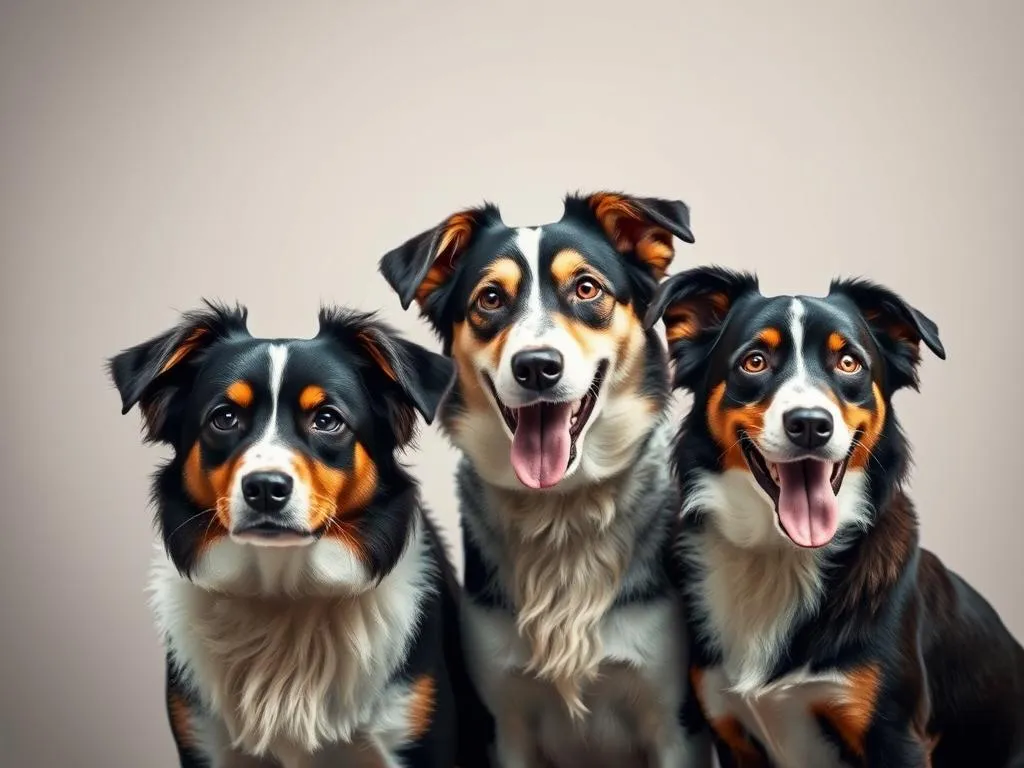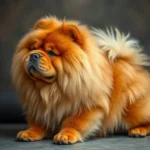
Tricolor dog breeds are among the most visually striking animals, often capturing the hearts of dog lovers with their unique coat patterns. Defined by their distinctive three-color combinations, these breeds present an array of appearances that can vary widely, but typically include colors such as black, white, and tan. Understanding the characteristics, care, and suitability of these breeds is essential for anyone considering adding a tricolor dog to their family.
Did you know that tricolor coat patterns are not just a matter of aesthetics? They can also be a reflection of the dog’s genetic background and breed history, making these dogs as intriguing as they are beautiful.
Understanding Tricolor Coat Patterns
A tricolor coat is characterized by three distinct colors, often in a specific pattern. The most common combinations include black, white, and tan, but variations exist across different breeds. The black and tan combination is frequently seen in breeds like the Beagle, while the black, white, and rust pattern is a hallmark of the Bernese Mountain Dog.
From a genetic standpoint, the presence of a tricolor coat pattern is the result of complex interactions between various genes. These genetic factors determine how colors express themselves in a dog’s fur. Dogs with bi-color or solid colors have simpler genetic patterns compared to their tricolor counterparts, often lacking the diverse palette that makes tricolor dogs so appealing.
When comparing tricolor dogs to those with bi-color or solid colors, the difference is stark. Tricolor dogs tend to have more intricate and ornate looks, allowing them to stand out in a crowd. The visual appeal is one of the reasons they have become increasingly popular among pet owners.
Popular Tricolor Dog Breeds
Several breeds are known for their stunning tricolor coats. Here are some noteworthy examples:
Beagle
- Characteristics: Beagles are small to medium-sized dogs known for their keen sense of smell and friendly disposition. Their tricolor coats typically feature a combination of black, white, and tan.
- History: Originally bred for hunting, Beagles have a long history that dates back to ancient times.
- Temperament: Beagles are friendly, curious, and great with children, making them superb family pets.
Cavalier King Charles Spaniel
- Characteristics: This breed boasts a beautiful silky coat that can display a tricolor pattern of black, white, and tan. They are small, elegant dogs with expressive eyes.
- History: The Cavalier has royal roots, being a favored companion of British royalty during the 17th century.
- Temperament: Known for their affectionate and gentle nature, Cavaliers are ideal lap dogs that thrive on companionship.
Australian Shepherd
- Characteristics: Australian Shepherds are medium-sized dogs known for their intelligence and agility. Their tricolor coats usually feature a combination of black, white, and copper.
- History: Despite their name, they were developed in the United States as herding dogs, often associated with the Australian sheepdogs that worked with American ranchers.
- Temperament: They are energetic, intelligent, and require ample exercise and mental stimulation.
Bernese Mountain Dog
- Characteristics: This large breed is known for its striking tricolor coat, which typically includes black, white, and rust colors. They have a thick, long coat that requires regular grooming.
- History: Native to the Swiss Alps, Bernese Mountain Dogs were originally bred as farm dogs, serving various roles including herding and draft work.
- Temperament: Bernese Mountain Dogs are calm, affectionate, and excellent with children, making them great family companions.
Shetland Sheepdog
- Characteristics: The Shetland Sheepdog, or Sheltie, is a small to medium-sized breed with a beautiful tricolor coat featuring black, white, and tan. Their long, flowing fur requires regular grooming.
- History: Originating from the Shetland Islands, these dogs were bred primarily for herding sheep.
- Temperament: Shelties are intelligent, eager to please, and very trainable, making them excellent companions for families.
Care and Maintenance of Tricolor Dog Breeds
Owning a tricolor dog comes with specific care requirements that ensure their health and happiness.
General Care Tips
- Grooming Needs: Regular grooming is essential, particularly for breeds with longer coats like the Cavalier King Charles Spaniel and the Bernese Mountain Dog. Brushing at least once a week can help prevent matting and reduce shedding.
- Dietary Requirements: Providing a balanced diet is crucial. Consult your veterinarian to determine the best food for your dog’s age, size, and activity level.
- Exercise and Activity Levels: Many tricolor breeds, like the Australian Shepherd and Beagle, have high energy levels and require daily exercise. Regular walks, playtime, and mental stimulation are vital for their well-being.
Specific Considerations for Tricolor Breeds
- Skin Care and Coat Maintenance: Tricolor breeds may be prone to skin issues, especially if they have long fur. Regular check-ups with a vet and monitoring for any signs of skin irritation can help maintain a healthy coat.
- Health Issues Common to Certain Breeds: Some tricolor breeds have specific health concerns. For example, Beagles can be prone to obesity, while Cavalier King Charles Spaniels may suffer from heart issues. Regular vet visits and preventive care are essential.
Training and Socialization
Training is crucial for all dog breeds, but particularly for intelligent breeds like the Australian Shepherd and Sheltie. Consistent training helps shape their behavior and ensures they are well-adjusted pets. Early socialization is equally important to expose them to various people, environments, and other animals.
Pros and Cons of Owning Tricolor Dog Breeds
Advantages
- Unique Appearance and Aesthetic Appeal: The striking tricolor coat adds to the breed’s charm, making them standout companions.
- Variety in Temperament and Sizes: From the small Cavalier to the large Bernese Mountain Dog, there’s a tricolor breed to fit every personality and lifestyle.
- Family-Friendly and Loyalty Traits: Many tricolor breeds are known for their loyalty and make excellent family pets, often forming strong bonds with their owners.
Disadvantages
- Specific Health Concerns: Some breeds may have hereditary health issues, which can lead to additional costs and care requirements.
- Potential Grooming Challenges: Breeds with longer fur may demand a higher grooming commitment, which can be time-consuming.
- Energy Levels and Exercise Needs: High-energy breeds require significant exercise, which may not be suitable for all households.
Choosing the Right Tricolor Dog Breed for Your Lifestyle
When considering a tricolor dog breed, it’s essential to evaluate your lifestyle and how it aligns with the breed’s needs.
Evaluating Lifestyle Factors
- Family Size and Dynamics: Larger breeds like the Bernese Mountain Dog may require more space and may not be ideal for small apartments. Conversely, smaller breeds like Cavalier King Charles Spaniels can thrive in smaller living spaces.
- Living Environment: Assess whether you live in an apartment or a house with a yard. Some breeds require more outdoor space to run and play.
- Activity Level: If you lead an active lifestyle, a breed like the Australian Shepherd may be a perfect match. For a more laid-back household, a Cavalier or a Bernese Mountain Dog may be suitable.
Matching Breed Characteristics with Owner’s Lifestyle
- Recommendations Based on Activity Level, Size, and Grooming Needs: If you prefer a lower-maintenance dog, a Beagle or Cavalier King Charles Spaniel may be ideal. For active individuals, consider breeds like the Australian Shepherd or Shetland Sheepdog.
Adoption vs. Purchasing from Breeders
Adopting from a shelter or rescue organization can be a rewarding experience. Many tricolor dogs are in need of homes, and adopting helps reduce the number of dogs in shelters. If you choose to purchase from a breeder, ensure they practice responsible breeding and prioritize the health and well-being of their dogs.
Conclusion
In summary, tricolor dog breeds offer a unique blend of beauty, personality, and companionship. Understanding each breed’s characteristics, care requirements, and suitability for your lifestyle is essential for making an informed decision. With the right knowledge and preparation, owning a tricolor dog can bring immense joy and fulfillment to your life.
Consider researching the specific breeds that interest you and connecting with local shelters or breeders. The right tricolor companion may be waiting for you!
FAQs about Tricolor Dog Breeds
What makes a dog tricolor?
A dog is considered tricolor when it has three distinct colors in its coat, typically arranged in a specific pattern.
Are tricolor dogs more prone to health issues?
While certain breeds may have hereditary health concerns, tricolor coats themselves do not inherently lead to increased health issues.
How do I train my tricolor dog effectively?
Consistent training methods, positive reinforcement, and early socialization are crucial for effectively training any dog, including tricolor breeds.
Can tricolor dogs be good with children?
Many tricolor breeds are known for their friendly and loyal nature, making them great companions for children when properly socialized.
What are the best diets for tricolor dog breeds?
Consulting with a veterinarian is essential to determine the best dietary plan based on the dog’s age, size, and health requirements.









